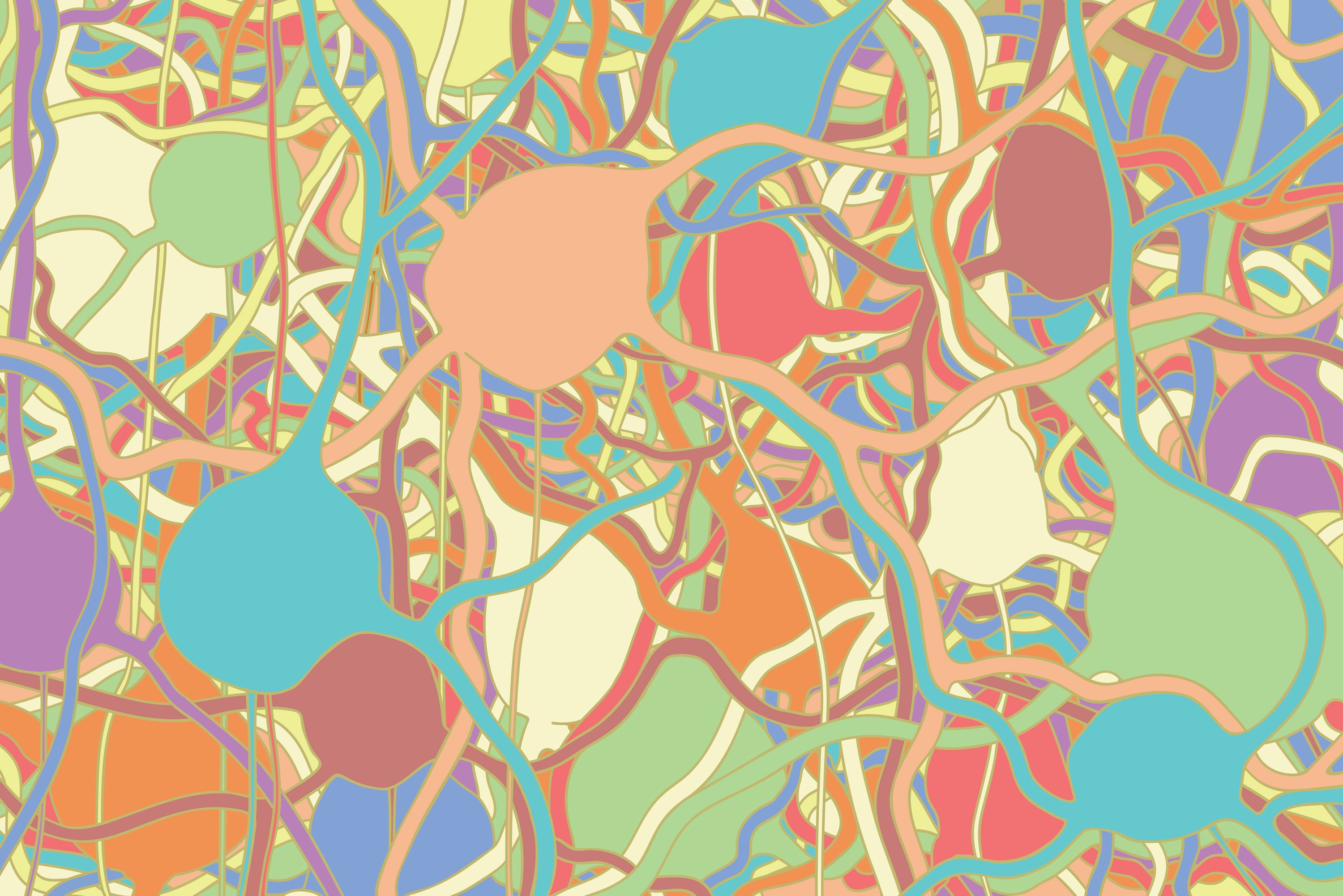A collaborative team from UConn Storrs and The Jackson Laboratory for Genomic Medicine characterized neuron diversity in the lateral hypothalamic area (LHA), a critical coordinator of fundamental behaviors in the brain. Using advanced single cell sequencing methodologies, UConn’s Alexander Jackson and JAX’s Paul Robson led the effort to identify both known and previously unrecognized neuronal populations in the most comprehensive census of LHA cell types to date. The results provide important clues for understanding LHA neural circuits and the potential development of targeted neuropsychiatric therapies.

The hypothalamus, while physically a small part of the brain, nonetheless controls some of our most fundamental life functions. Many of the core physiological and behavioral functions that we require for survival are coordinated here. These include the regulation of metabolism (i.e., energy expenditure and feeding), thermoregulation, wake-sleep cycles, stress responses, and more. In humans, disruptions in these behaviors are common hallmarks of many neuropsychiatric, sleep, and metabolic disorders, including addiction, mood disorders, anxiety, and obesity.
The neural circuitry of the hypothalamus is highly conserved, meaning it’s very similar across species, including mice and humans. It is also known that the hypothalamus and its substructures are populated by diverse neuronal cell types, underlying the many different vital functions they serve. Nonetheless, exactly which cell types are present and how they differ at the molecular level remains poorly defined. With advances in single cell RNA sequencing methodologies, however, it is now possible to gain a much more detailed understanding of hypothalamic neuron populations.
In a paper published in Nature Neuroscience, “Single-cell transcriptomic analysis of the lateral hypothalamic area reveals molecularly distinct populations of inhibitory and excitatory neurons,” a team led by UConn assistant professor of physiology and neurobiology, Alexander Jackson, and including Jackson Laboratory (JAX) associate professor Paul Robson, present a comprehensive census of molecularly distinct cell types in the lateral hypothalamic area (LHA), a critical coordinator of behaviors within the hypothalamus. Applying a droplet-based single-cell RNA-sequencing (scRNA-seq) strategy, UConn Ph.D. student Laura Mickelsen and JAX computational biologist Mohan Bolisetty not only identified new populations of neurons within the LHA of mice, but they also found unexpected diversity among known ones. The research collaboration was a product of the JAX-UConn Single Cell Agreement, which combines the expertise and resources of the two institutions for innovative single cell research projects.
“The complexity of neuronal sub-types was impressive,” says Robson, who directs the Single Cell Biology Laboratory at JAX. “We generally don’t see that level of complexity when applying single cell transcriptomics to other, non-neuronal tissues.”
The result is the most detailed molecular description of LHA cell types to date, with the neuron clustering based largely on the differential expression of genes associated with neuropeptides, transcription factors, and synaptic proteins. Interestingly, the census defines 15 distinct populations of glutamatergic (excitatory) neurons and 15 GABAergic (inhibitory) neurons. The diversity may explain the variety of behavioral effects known to be elicited by non-selective activation of the LHA in animals, including reward-related, feeding, predatory, and locomotor behaviors.
“The study demonstrates diversity among cell populations that were previously thought to be relatively homogenous,” says Jackson. “It also provides a road map for future investigations of LHA neural circuits using genetic tools.”
In addition to developing the census, the researchers functionally characterized a previously unknown population of LHA neurons that express somatostatin, a peptide hormone that regulates the secretion of other hormones. The team analyzed the anatomical distribution of these neurons, their electrical properties, and where they project to in the brain. In addition, they demonstrated that selective activation of these cells in mice results in robust behavioral activation, including significantly increased locomotor activity during normally inactive periods. The mechanisms underlying the relationship between the somatostatin positive neuron populations and the activated behaviors provide areas for future investigation.
“The in-depth characterization of the diverse neuronal populations in the LHA reveals functional molecular markers, such as receptors and ion channels, that may allow us to selectively tune LHA neural circuits to modulate behavior,” says Jackson. “Down the road, this information may help guide the development of new therapeutic strategies for neuropsychiatric, sleep, and metabolic disorders.”
This project was funded by the National Institute of Mental Health and a seed grant from the Connecticut Institute for the Brain and Cognitive Sciences at UConn.



